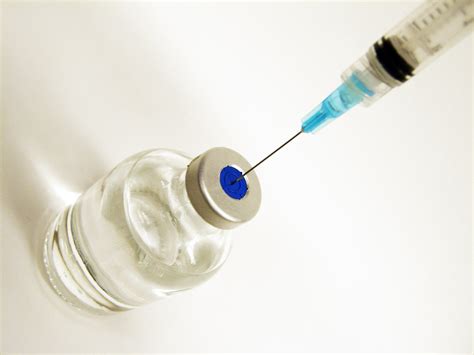The introduction of the BCG vaccine is one of the first vaccinations given to newborn children. In Russia, all infants are vaccinated against tuberculosis, with the exception of some cases. This is necessary to prevent the spread of an extremely severe and dangerous infectious disease that can lead to death.
Despite preventive measures taken at all levels, including state programs to combat tuberculosis, the epidemiological situation continues to remain unfavorable, and it is not possible to reduce the incidence. For this reason, every child must be given the BCG vaccine in the maternity hospital.
Indications
Today, two types of anti-tuberculosis vaccines are used: BCG and BCG-M. They both contain a weakened strain of Koch's bacillus, and the only difference is in its concentration. Mycobacteria are grown artificially or obtained from cattle. Other drugs for anti-tuberculosis vaccination are not used in the Russian Federation.
The World Health Organization recommends TB vaccinations for the following categories of people:
- children under one year old born or living in areas where the situation with this disease is unfavorable;
- children under 7 years of age living in regions where tuberculosis is rare, but there is a high probability of infection (due to low quality of life, living in a disadvantaged area);
- people in contact with patients infected with tuberculosis (doctors, junior medical personnel, employees of prisons and other correctional institutions, relatives of patients living in the same apartment).
Russia is one of the regions where the epidemiological situation regarding tuberculosis continues to remain unfavorable. In this regard, by order of the Ministry of Health, the National Vaccination Calendar was approved, which includes mandatory vaccination of newborns (except in cases where the child has contraindications).
The following scheme is used:
- Primary vaccination is carried out in the maternity hospital on days 3-7 of life.
- This is followed by a series of revaccinations: at the ages of 7 and 14 years, if the child has a negative Mantoux test and there are no other contraindications.
The timing of vaccination is determined by the regulatory act of the Ministry of Health of the Russian Federation, which is called “Instructions on vaccination and revaccination against tuberculosis.”
Tuberculosis. BCG vaccination.
Apparently because of its intrusiveness, the image of a tuberculosis dispensary, and for one thing phthisiatricians, has acquired sharply negative features in the mass consciousness. Many parents have serious doubts about the advisability of vaccinating their children against tuberculosis and conducting an annual Mantoux test.
However, the statistics on the incidence of tuberculosis in the Russian Federation remains very sad: 14.7 children per 100 thousand people fall ill annually, and 82 people per 100 thousand people per year among adults.
For comparison, in the United States, 9 people per 100 thousand people become ill with tuberculosis every year. It should be taken into account that the incidence of tuberculosis among children is even lower.
The deterioration of the epidemiological situation in our country is largely due to increased migration of the population from regions with a higher prevalence of tuberculosis, a decrease in the volume of preventive measures (primarily vaccination), as well as a decrease in the level of early diagnosis.
Man has suffered from a disease such as tuberculosis since time immemorial. The patients experienced gradual emaciation and hemoptysis. This is where the name phthisiology comes from, because The word "ftiz" - translated from Greek, means exhaustion. In Russia, the popular name for this disease was consumption.
Tuberculosis is most widespread in the poorest segments of the population, although this situation is still true today.
In 1882, scientist Robert Koch discovered the causative agent of tuberculosis - a bacillus, which was later named Koch's bacillus.
In modern classification, the microbe is called Mycobacterium tuberculosis.
This bacillus has three types: the causative agent of human tuberculosis, the causative agent of tuberculosis in cattle, the causative agent of tuberculosis in birds and white mice.
The source of infection for children is most often adults. The greatest danger is presented by patients with bacterial excretion. The main route of infection is airborne. However, infection is possible without direct contact with the patient. Koch's wand is very resistant to environmental factors, can withstand cooling down to -269 degrees, heating up to 80 degrees for 20 minutes, and can be kept in dusty, dark rooms for a long time. Thus, infection is also possible by touching objects on which particles of dried sputum remain, i.e. transmission of infection through airborne dust is possible.
When consuming RAW milk from cattle, a food (nutritional) route of infection spread is possible.
A characteristic feature of mycobacteria is their extremely slow reproduction, so in laboratories, cultures of biological materials grow for a long time, from 12 days to 3 months, which makes timely diagnosis of the disease difficult.
The high resistance of bacilli in the external environment, the presence of different routes of infection, the difficulty of diagnosis - these are the main factors that have led to the fact that currently, according to the World Health Organization, a third of the world's population is infected with the tuberculosis bacillus!
2011 marked the 90th anniversary of the practical use of the BCG vaccine for immunization against tuberculosis. The persistence and patience of the vaccine creators is amazing. Over the course of 13 years, researchers subcultured the tuberculosis bacillus into more and more unfavorable environments, ensuring that the microorganism lost its pathogenic properties.
The anti-tuberculosis vaccine got its name Bacielle Calmette-Guerin in honor of the authors, translated into Russian, after the first letters of the authors' surnames - BCG.
After years of research, the first newborn with a family history of severe tuberculosis was vaccinated in France in 1921. Vaccination did not cause complications and prevented the child from contracting these dangerous diseases. Since then, the vaccine has undergone many changes; more than one generation of people has already received this vaccine.
Long-term observations of vaccinated and unvaccinated people have shown that BCG vaccination reduces morbidity, mortality and, just as importantly, the development of severe forms of tuberculosis (such as, for example, tuberculous meningitis). Since the 60s, when the method of intradermal vaccine administration was introduced into practice, the incidence has decreased by 5 times, and the cases of tuberculous meningitis have decreased by 4.8 times. It is important that BCG vaccination blocks the hematogenous (i.e., through the bloodstream) spread of tuberculosis infection in the child’s body. Thus, the mortality rate of children from tuberculosis decreased by 15.8 times.
Currently there are two vaccines - BCG and BCG-M. The BCG vaccine in the Russian Federation is produced with a content of “weakened” bacteria from 0.5 to 1.5 million in one vaccination dose. BCG-M is a drug that contains a reduced number of microbes: 0.5 - 0.75 million in one vaccination dose.
At the site of intradermal administration of the BCG and BCG-M vaccine, a compaction (infiltrate) measuring 5-10 mm with a nodule in the center and a crust normally develops; sometimes an abscess (pustule) and scanty liquid (serous) discharge may be observed. In newborns, the reaction appears after 4-6 weeks. Over the next 2-4 months, and sometimes longer, the process gradually reverses. DO NOT try to squeeze or apply any ointments, alcohol or other dressings to the vaccine injection site. As a result, a scar of 3-10 mm appears. The “better” the scar is formed, the more reliably the child is protected by the vaccine against tuberculosis infection. The absence of a scar (starting from 6 months) is an indication for consultation with a phthisiatrician.
After the vaccine is administered, immune reactions are triggered in the child’s body, which ultimately lead to the formation of post-vaccination immunity. The first protective antibodies appear 2-4 weeks after vaccination, post-vaccination immunity reaches its maximum intensity by 12 months, and by 7 years of age it gradually weakens. That is why, if a child has not “met” the tuberculosis bacillus, revaccination is necessary.
Children older than 2 months who were not vaccinated in the maternity hospital are subjected to a Mantoux test before vaccination with BCG.
Other preventive vaccinations are carried out no earlier than 1 month after vaccination against tuberculosis (vaccination against viral hepatitis B is carried out in the first 12 hours of a child’s life, before BCG is administered). You can view the complete visual vaccination schedule on our website here.
Many parents are concerned about the likelihood of complications after vaccination.
Yes, indeed, as with any drug, unwanted reactions may occur.
The rate of post-vaccination complications in the Russian Federation is 0.02%. This level of post-vaccination complications is quite low.
Complications are divided into different types.
For reference, we present the distribution of the frequency of complications by type:
- Lymphadenitis (inflammation of the lymph nodes) - 0.01% (11.5 per 100 thousand vaccinated).
- Cold abscesses at the injection site (a variant of local inflammation) - 0.006% (5.9 per 100 thousand vaccinated).
- Infiltrates on the skin at the injection site (a variant of local inflammation) - 0.0015% (1.5 per 100 thousand vaccinated).
- Ulcerations on the skin at the injection site - 0.002% (1.7 per 100 thousand vaccinated).
- Keloid scars – 0.0004% (0.4 per 100 thousand vaccinated).
- Osteitis – 0.00006% (0.06 per 100 thousand vaccinated).
As can be seen from the statistics, the bulk of unwanted post-vaccination reactions are variants of the local inflammatory process.
In conclusion, I would like to emphasize once again that BCG vaccination does not provide a 100% guarantee against tuberculosis, but it does protect against its severe, fatal forms. And given the growing incidence, it is currently necessary in our country.
Thus, only vaccination and medical supervision (primarily the annual Mantoux test) will help create reliable protection against this infection. Read more about the Mantoux reaction and Diaskintest here
Contraindications

Sometimes vaccination is contraindicated for a newborn. The decision to refuse vaccination is made by a neonatologist based on an examination of the child.
The following cases are absolute contraindications to BCG:
- the child was born from an HIV-infected mother;
- severe hereditary diseases have been diagnosed;
- serious birth injuries resulting in disruption of the central nervous system;
- identified tumor processes;
- immunodeficiency states;
- the presence of close relatives with an active form of tuberculosis in the newborn;
- older children in the family experienced severe complications after vaccination.
If the newborn's weight is less than 2.5 kg, then the BCG-M vaccine is used. Vaccination is postponed if the baby is diagnosed with erythroblastosis, severe infectious diseases that developed in the perinatal period, or in the presence of dermatological diseases.
Before revaccination, an examination is also carried out, and if the listed contraindications are identified, repeated administration of the drug is prohibited. Before vaccination, a Mantoux test is done. If the reaction is questionable or positive, BCG should not be administered.
Infants older than 2 months, who for some reason were not vaccinated in the maternity hospital, are given BCG after examination by a pediatrician and a Mantoux test. To do this, you need to go to the clinic and get tested.
Main indications and contraindications for vaccination
Doctors include the following indications for vaccination against this disease:
- being in the same area as an identified carrier of the disease;
- moving to places with high concentrations of tuberculosis patients;
- work in medical institutions where there are constantly patients suffering from tuberculosis.
All people who may come into contact with patients with tuberculosis in one way or another are subject to monitoring, regular examination and, if necessary, additional vaccination.
After 14 years of age, the vaccine protects a person from tuberculosis microorganisms for a long period - up to 20 years.
However, from the age of 18, all people must undergo fluorography annually in order to promptly detect the occurrence of the disease. Sometimes vaccinations are carried out even after 30 years of age, at the request of the person himself to protect himself or if he has not been immunized before.
As with any other disease, in the case of vaccination against tuberculosis, there may be absolute and temporary contraindications. Absolute contraindications to vaccination are the presence of tumors in the body and immunodeficiency. Doctors include relative or temporary contraindications for vaccination against tuberculosis in the maternity hospital:
- low baby weight (up to 2 kilograms), prematurity;
- identified intrauterine infections of the fetus;
- birth injuries affecting the baby’s nervous system;
- severe stages of skin diseases;
- all kinds of infectious processes;
- all kinds of purulent-septic diseases;
- hemolytic disease.
Also, revaccination against tuberculosis should not be revaccinated in the future if very severe reactions have previously been observed with the introduction of such vaccines. Only after complete recovery of all the conditions described above do doctors consider the possibility of immunization for such a child.
Vaccination
The administration of the drug BCG or BCG-M is carried out in a medical institution, in a treatment room. According to the instructions, the drug is injected into the left shoulder, always intradermally. Other methods (under the skin or intramuscularly) are strictly unacceptable. Therefore, in maternity hospitals and children's clinics there are nurses who have undergone special training. If it is not possible to inject into the shoulder, then another area of the body is selected where the skin is thick enough. Then, as a rule, the vaccine is injected into the thigh.
BCG is given after other mandatory vaccinations included in the national vaccination calendar. After the administration of this vaccine, it is prohibited to immunize with other drugs for a month.
Normal reaction to a vaccine
After administration of a vaccine containing a strain of Mycobacterium tuberculosis, the child begins to actively develop specific immunity to the pathogen. The immune system reacts to the penetration of a foreign microorganism by producing immunoglobulins, and in the future, when faced with Koch’s bacillus, it will intensively resist the spread of infection. The process of producing antibodies is accompanied by a slight increase in temperature; this is a normal reaction of the body.
1-2 months after the vaccination procedure, a response to the vaccine begins to form; this process continues up to 5-6 months. Initially, the injection site turns red or blue, black or purple. A small lump, blister or pustule forms on this area of the skin. If suppuration occurs, then there is no need to be afraid. Over time, it becomes covered with scabs, which cannot be removed. Such processes are the norm.
Also, you should not treat the abscess with antiseptic solutions or exert mechanical force on it. It can rupture on its own, and re-suppuration is possible.
The injection site takes about 6 months to heal. A white scar forms at the injection site and lasts for life.









